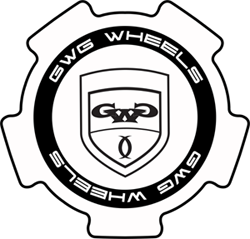Forged Wheels

Forged wheels are strong and they are light, but those amenities come with a price. The fact is forged wheels are expensive. When you see how these wheels are made and how much material is used it makes sense why these wheels fetch such a high price. Steve Schardt of Forgeline Wheels provided some insight on how their forged wheels are made. “When we are forging we start with a bunch of 6061 aluminum,” said Steve. “We forge it to gain grain flow, which means we can use 30-35 percent less material, which is where we save weight.” Forgeline wheels start with one piece monoblock and are forged for strength.
After the forging process Forgeline puts the wheel blank in a lathe and begins turning. The wheel starts at about 100 pounds, then they turn it and get it down to 45-50 pounds. Then they put it in a Computer Numerical Control (CNC) mill and they get it down to about 19.5 pounds for an 18 inch wheel. A lot of forged material is cut away to leave behind the strong wheel.
This process creates a wheel which is lightweight but has a high load rating. The load rating for each Forgeline racing wheel is at 2,100 pounds. Why load rating is important is due to the forces acting on the wheel depending on the tires used. For example if you had a wheel rated at 1,000 pounds and put on a 200 treadwear tire, then that wheel is really only good for about 800 pounds. If you put a Hoosier tire on that wheel it would only be good for about 700 pounds. This is problem when you have four wheels (700 pounds x 4 = 2,800 pounds) on a car that weighs 3,500 pounds. With Forgeline wheels rated at 2,100 pounds each they can handle the stickiest tires on the market.
The forging process which creates the high load rating helps the wheel during an impact. If a Forgeline wheel strikes a wall it will bend. This is different from a cast or flow formed wheel which has granular aluminum so if they hit a wall they will break -which means their failure mode is catastrophic.
Even though a forged wheel is stronger it is still a wearable item. Wheels don’t last forever. Wheels are designed with a triangle concept: weight, strength and longevity. According to Steve Schardt, “I can make a wheel strong and heavy to last forever. Or I can make a lighter wheel that is not as strong but it will only last three years. You have to consider that trade off for any wheel. These are fatigued items, it doesn’t matter if a wheel is cast, flow formed or forged, in racing they will all fail eventually.”
Understanding that wheels are wearable items, Steve has advice to racers, “Keep inspecting your wheels, look at the back of the wheel, especially near the hub for hairline cracks.” Even though we have established forged wheels are stronger those wheels aren’t available to everyone. The smallest diameter wheels which Forgeline makes are 17 inches. The market for Forgeline is the larger faster more powerful machines, like the Ford Mustang GT4 race car, a pro-touring Optima Ultimate Street Car Challenge 1969 Camaro, or a Porsche GT3. Smaller lighter cars do not need the same high load rating that Forgeline wheels provide and can use a cast wheel. However, the failure point on a cast wheel can still reach out to bite a racer.






Leave a Comment